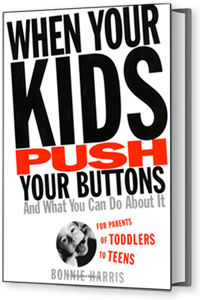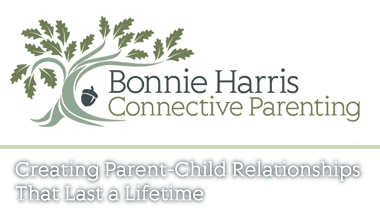We all know what it’s like to lose it with a child. When that button gets pushed, you see red, your authority and sanity flies out the window and you say and do things you swore you never would. It feels like there’s nothing you can do about it—but there is. Once you know that button belongs to you, and your reaction is your responsibility, not your child’s to change so you can stay calm, the job of uncovering that button and identifying it is the next step. It’s a peeling away process, and the layers to be peeled are not at all obvious for most of us.

After a button-pushing situation, take the time to dig. It’s easiest to start with your reactions. If you didn’t like your reaction, write down what you did.
Reaction: When that happened, I blew up and screamed.
Then think about how you felt. Your emotions are one word. I felt like I was a terrible parent is a thought. The feeling might be hopeless.
Feelings: I felt used, resentful, unappreciated.
Okay great, you have identified your reaction and your emotions.
Next, the harder job is to figure out what you thought when it all started. In other words, what assumptions did you make? These are the ideas, judgments, perceptions, and fears that pop into your head in a nano second that provoke your feelings and then your reactions.
Putting attention on your assumptions raises consciousness about your part of the battle and helps you understand your responsibility in the interaction. To know that your thoughts about your child come from you, not your child, shifts the focus and allows you to see the situation clearly. It is all in your control.
Ask yourself: If I felt used, resentful and unappreciated, what must I have been thinking?
Assumption: He’s so inconsiderate. He expects me to get him whatever he wants. All he thinks about is himself. I do everything for him, and this is what I get. He’s never going to have any friends. What have I done wrong to teach him to be so self-absorbed?
You could probably write a page with your assumptions and fears. But you are probably not aware of them in the moment, and they might be hard to identify until you get in the practice. But your assumptions are the key to everything.
The next level is looking at your expectations.
Once you have identified a thought or two or five, then ask yourself, What was I expecting my child to do or not do at that time?
Expectation: He should get his own water and not expect me to wait on him. (An expectation is most always a should).
Then: Is that realistic for this child at this stage of development and in this situation, considering his agenda? You will probably come up with a no or probably not. Or it’s a yes! But if you don’t like your reaction, the key to change is in your assumption. These assumptions are all judgments—both of your child and you. You need to get to the facts of the situation.

Reframed assumption (objective facts): He was watching a show I let him watch. He was cozy on the couch and didn’t want to get up. He’s still in a very egocentric stage of development. He was just trying to get what he wanted when he wanted it. That’s normal.
When you can think this way, your emotions will be quite different. You will be more understanding of where he’s coming from, less angry about his demands. So you can stay calm.

From that place, you can say either, Sure I’ll get you some water or I’ll put your show on pause while you get your water. It’s your choice whether you want to get up and get it or not.
Your expectations are usually based on the standards you were brought up with – spoken or unspoken. I expected her to listen to me and not talk back with that attitude of hers might be the product of the standard you were raised by as: Children should do as they are told. Talking back is bad behavior that needs to be eradicated.
Another helpful question is, What would have happened to me if I had done what my child just did? You might come up with, I would never have dared. Why? Fear is the answer. If you did not feel free or safe to express whatever you were feeling or wanted without fear of criticism, what message did that send to you? If you have chosen to parent differently so your children do not fear you, #1 – Good for you. You are breaking the old cycle, and #2 – Things will be messier and you will actually need to here and deal with your child’s egocentric demands.
This is not to say that you should have copped an attitude with your parents. But if you couldn’t or else…, that meant you had to be somebody they wanted you to be in order to get their approval, i.e. “I’m not good enough as I am” (your limiting belief—your perception in your immature brain of the message they sent). If merely a look from a parent stopped you from arguing your case about something, then your wants were not important. One step further—you were not important.

This is not about parent-bashing—your parents’ buttons came from their past and so on. Or self-bashing—you were a kid protecting yourself. This is about understanding what perception you had of your parents’ expectations of you that led you to the expectations you now hold. When those expectations attach to your past, they are not appropriate for your child in the present.

We punish our children in an attempt to keep them from pushing our buttons, often escalating the original problem into a cycle of anger and blame. When Your Kids Push Your Buttons is not about what to do to your kids to get them to stop pushing your buttons. This book is about how to be the parent you wish you could be-the parent that only you are holding yourself back from.
Related articles:







